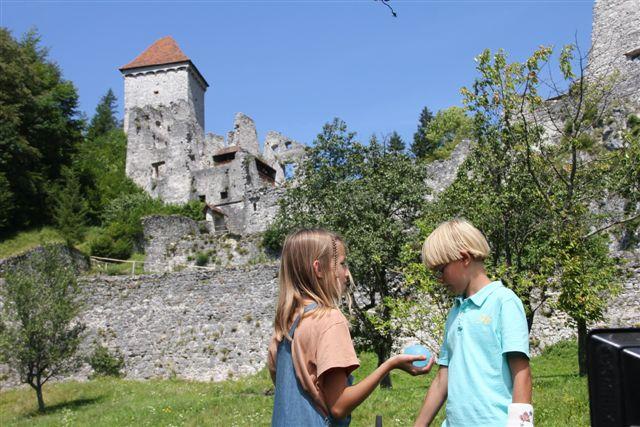
Even though it is now largely in ruin, the Kamen Castle still provides an impressive sight as it guards the entrance to the Draga Valley in Slovenia’s Gorenjska region. Its impressive stone walls give some indication of the castle’s long and often turbulent history – a history that ensures its memory lives on in popular consciousness to this day.
The castle was likely built in the 12th century, even though written sources first mention it in the 13th century. It was first recorded as “Castrum Lapis,” lapis being the Latin word for “stone” – kamen in Slovenian. The castle was first owned by the Counts of Ortenburg and was significant for its location on a major north-south trade route. To this date, the castle’s tower retains much of its original, Romanesque appearance, but little else of the 12th century structure survives.
The castle’s fate reflected the twists and turns of history in this part of Europe. Through the centuries, its ownership passed from one noble family to another, depending on who was most influential in the area at any given time. It was even briefly owned by the illustrious Counts of Celje. In fact, the son of Hermann II was famously killed at the castle when he fell off a horse. According to legend, the castle was also the site of Knight Lambergar’s victorious joust with Pegam the Giant. After several ownership changes, the castle fell into the hands of the Hapsburgs.
The castle changed its appearance frequently during this time. It underwent several renovations as architectural fashion – and the whims of its owners – changed over the years. Some of residential quarters were rebuilt in the Gothic style, while an addition was completed during the Renaissance. Nature also played a part in the changes; a powerful earthquake in 1511 reduced much of the castle to rubble, forcing a thorough reconstruction. As part of one project, the castle’s owners even constructed an emergency escape to a nearby cave, in case it was run over by troops led by local rivals, even worse, the Ottoman Turks.
Eventually, the castle was no longer strategically important, and its owners moved into a more modern castle. It fell into disrepair and was abandoned altogether in the 18th century. It was slowly demolished and its remains were used as building materials for churches, homes, and even a new castle in the area that was then under construction.
For Kamen Castle, time essentially stood still until 1959, when its remains began to be restored. They were still ruins, but the renovation stabilized them, and wooden platforms were built to give visitors a chance to see the castle was from up close.
The castle was also immortalized by Slavko Avsenik, Slovenia’s leading composer of traditional-style music from the nearby village of Begunje. He mentioned the historic building a well-known ode to the Draga Valley – his nod to the area’s history and local pride.

































































